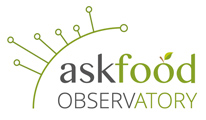The forestry sector provides multifaceted values; these include the production of renewable raw- materials, sequestering carbon dioxide, as well as creating spaces for biodiversity, resilience and attractiveness as a place for recreation and as a landscape that humans appreciate. It is noteworthy that wood from sustainable forestry is a major renewable material and furthermore the biodiversity and social responsibility aspects, e.g. CSR, in relation to forest-based activities are attracting attention.
To increase the quality and number of micro-habitats for enhanced biodiversity, the case will aim toward higher understanding about logging techniques, strategies and methods.
The course is based on an ecological and biological theme, with focus on how to, not only prevent, but also to create high value habitats in different conditions, will be performed during practical logging operations.
The case design will cover some of the essential parts of the forest supply chain such as, planning, harvesting and forwarding of roundwood and logging residues.
Researchers/instructors (A) will participate with their academical/methodical knowledge, Machine Operators (B) with their practical experiences and Middle Management Officers (C) with their knowledge of communicating within the supply chain, as well as with private forest owners.
The courses will be designed as physical meetings, including theoretical discussions and field excursions, where “speaking time limit” is set to 1/3 for each group of participants (A, B, C).
The course design will ensure that all participants actively present their thoughts and ideas about practical development, with the goal to create a sustainable forest management.
Each course consists of 4 meetings (4 hrs each) running over a period of 4 months. Between physical meetings, the participants are expected to do their homework, e.g. bringing back thoughts, ideas, new experiences and evidence etc. to share during the next meeting. The meetings create an arena where key issues are discussed, and action plans are developed.
During the courses all participants (A, B, C) will have the opportunity to share their; “from my point of view... this can / this can ́t be done...considering improved micro habitats”. The purpose is to enlighten other participants in the group. Before and after each meeting, all participants will do a self-evaluation, to map their current level of insight.

